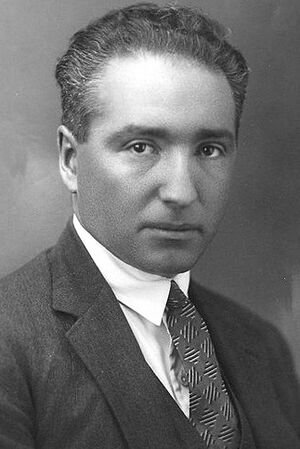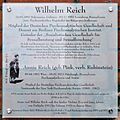Wilhelm Reich facts for kids
Quick facts for kids
Wilhelm Reich
|
|
|---|---|

Portrait by Ludwig Gutmann (Vienna, before 1943)
|
|
| Born | 24 March 1897 |
| Died | 3 November 1957 (aged 60) United States Penitentiary, Lewisburg, Pennsylvania, U.S.
|
| Resting place | Orgonon, Rangeley, Maine, U.S. |
| Nationality | Austrian |
| Medical career | |
| Education | University of Vienna (MD, 1922) |
| Speciality | Psychoanalysis |
| Institutions |
|
| Known for |
|
|
Notable work
|
|
| Family | |
| Partner(s) |
|
| Children |
|
| Parent(s) |
|
| Relatives | Robert Reich (brother) |
Wilhelm Reich (24 March 1897 – 3 November 1957) was an Austrian doctor and a psychoanalyst. He was part of the second group of analysts after Sigmund Freud. Reich wrote several important books, including Character Analysis and The Mass Psychology of Fascism. He became known for his very new ideas in the field of psychiatry.
Contents
Who Was Wilhelm Reich?
Wilhelm Reich earned his medical degree from the University of Vienna in 1922. After that, he worked at Freud's clinic in Vienna. He was interested in how people's minds work and how their feelings affect their bodies.
During the 1930s, Reich explored ways to combine psychoanalysis with social ideas. He wanted to focus on preventing mental health issues rather than just treating them.
Exploring New Ideas
Reich developed several unique ideas. One was "muscular armour." This idea suggests that our bodies can hold onto stress and emotions, showing them through how we move or hold ourselves. This concept helped create new types of therapy, like body psychotherapy.
In 1939, Reich moved to New York. While living in Oslo, he had started talking about "orgone energy." He believed this was a basic life energy found everywhere. In 1940, he began building "orgone accumulators." These were special boxes that he claimed could collect this energy. He thought sitting inside these boxes could help people, even those with serious illnesses.
Facing Challenges
Reich's ideas and devices faced strong challenges. In 1947, two magazines published critical articles about his work. The U.S. Food and Drug Administration (FDA) then took legal action. They ordered that his orgone accumulators and related books could not be sent across state lines. The FDA called his devices a "fraud."
In 1956, Reich was charged with not following the court's order. He was sentenced to two years in prison. That summer, a court ordered that over six tons of his books and writings be destroyed. This event is seen by many as a major act of censorship in U.S. history. Reich died in prison a little over a year later due to heart failure.
His Lasting Impact
Even with the challenges he faced, Wilhelm Reich's work influenced many people. His ideas about how the body and mind are connected shaped new types of therapy. His writings also inspired students and thinkers for generations.
Images for kids
-
Plaque on Schlangenbader Straße 87, Berlin-Wilmersdorf, the house in which Reich lived, 1931–1933.
-
Bronisław Malinowski wrote to newspapers in Norway in support of Reich.
-
Reich's home in Frogner, Oslo. A blue plaque, in Norwegian, reads: "The physician and psychoanalyst WILHELM REICH (1897–1957) lived and worked here 1935–39. Developed character analysis and the body-oriented therapy."
-
Reich discussed orgone accumulators with Albert Einstein in 1941.
-
Wilhelm Reich Museum, Orgonon.
-
August 1947 letter from the FDA about Reich.
-
Reich argued that orgone was responsible for the colour of the northern lights.
See also
- Aether (classical element)
- Aether (mythology)
- Élan vital
- Energy (esotericism)
- Luminiferous aether
- Qi
Sources












